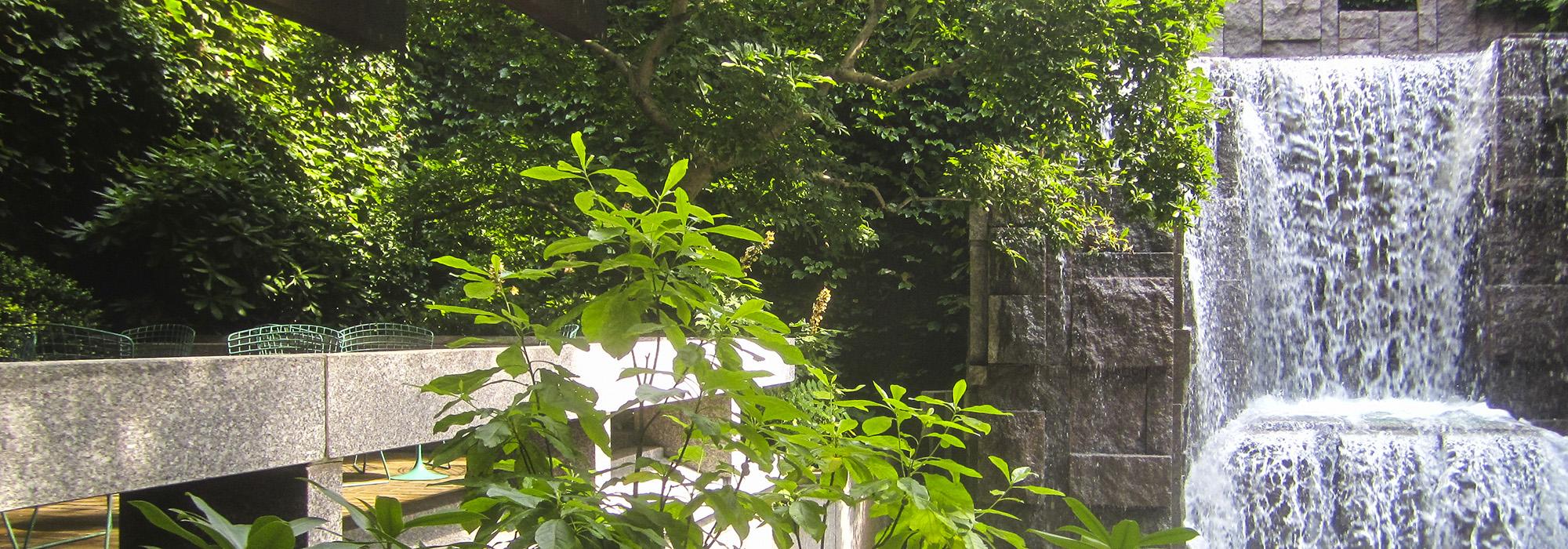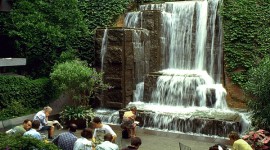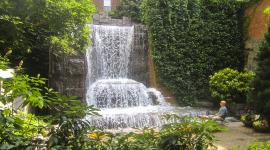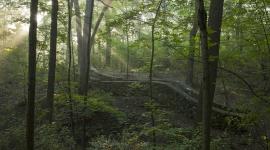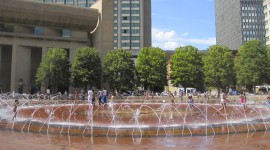Greenacre Park Added to the National Register
On February 2, 2018, Greenacre Park was added to the National Register of Historic Places. Located off East 51st Street, between Second and Third Avenues and opened in 1971, the park was designed by Sasaki, Dawson, DeMay Associates, with Masao Kinoshita as lead designer and the involvement of Hideo Sasaki and Tom Wirth. The 6,360-square-foot, privately owned, publicly accessible space was a gift from the philanthropist Abby Rockefeller Mauzé and is only the size of a tennis court; yet it receives up to 200,000 visitors every year. The 47-year-old property is the first vest pocket park to be added to the National Register. According to East Side City Council Member Keith Powers, the designation is a sign of the value that the park brings to the precinct.
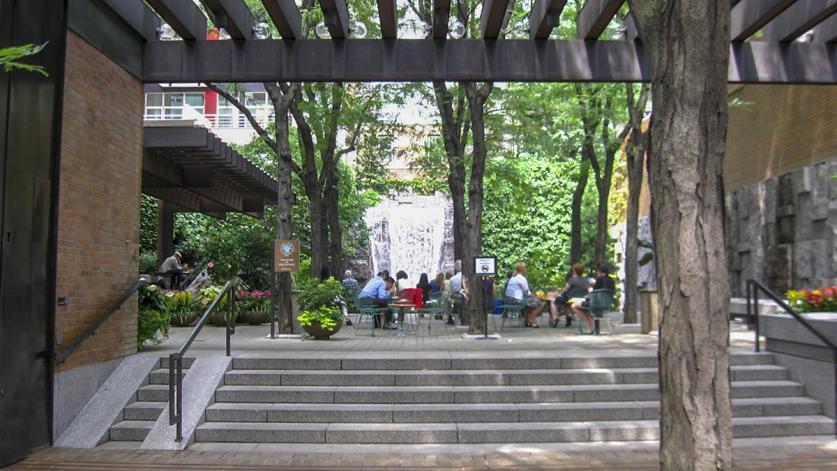
Historically, such small urban parks were conceived to introduce small areas of green space to the city’s park-starved neighbourhoods. Until the late 1960s, city parks occupied a minimum of three acres, fronting an avenue and accessible via multiple entrances. Vest pocket parks were devised by mid-century landscape architects and planners to fill gaps in the streetscape left by urban renewal demolition, while responding to the high cost and intensive use of land in the city center. While nineteen percent of the total acreage of the average City Council district is devoted to parkland, District 4, which includes the East Side and Midtown (and which contains Greenacre Park), remains at just two percent.
TCLF enrolled Greenacre Park in its Landslide program in 2017 in response to a rezoning effort by the Greater Midtown East area to allow for taller buildings that would double the number of hours that shadows would be cast over the park. The shadows threatened the health of the park’s honey locust trees, which, although otherwise resilient, are quite light-sensitive. Although properties added to the National Register can qualify for grants and tax credits at both state and federal level, the listing does not extend to legal protections from shadows or regulations on surrounding development. Nevertheless, the designation has thrown a spotlight on the park’s stewardship challenges, with officials now pledging to protect it.
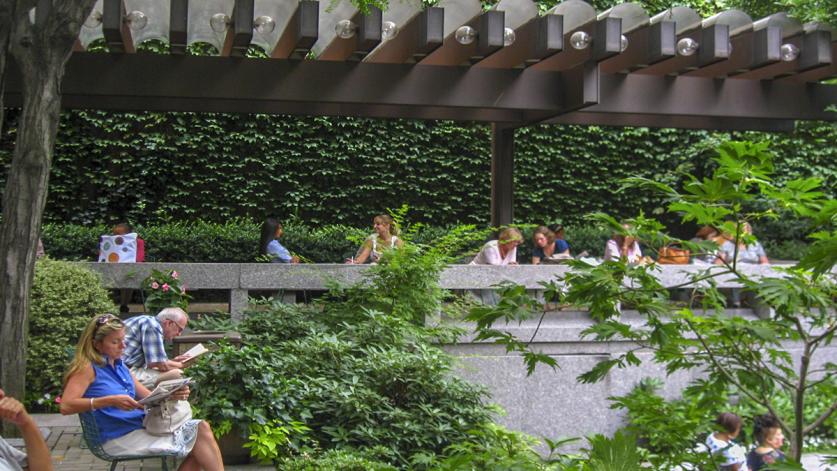
Layla Law-Gisiko, Chair of the Central Park Sunshine Task Force of Manhattan Community Board Five, highlighted the existing loopholes in shadow regulations:
“Currently, there is no process in the zoning resolution to assess, let alone mitigate, the impact of buildings on parks and open space. As a result, we have seen numerous parks throughout the city plunged into shadows with no ability to protect the public's access to sunlight.”
With the southern edge of Central Park already impacted by emerging towers, the encroachment of private enterprise onto public parkland is a growing threat. A task force assessing shadows is urgently needed now that developers have a wide range of tools at their disposal for expanding as-of-right zoning, including transferable development rights and zoning lot mergers.
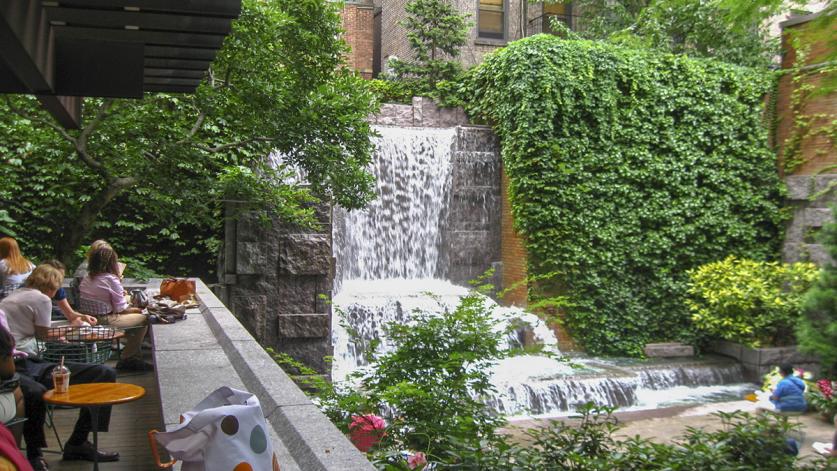
In the case of Greenacre Park, the site is virtually unchanged since its inauguration in 1971, and, like Paley Park, which opened in 1967, it has all the basic ingredients of a beneficial public space. Separated from the street by trellis-covered steps, the park is composed of three levels highlighted by a 25-foot-high waterfall in the rear sunken terrace, which cascades down huge sculpted granite blocks. The first level is shaded by honey locust plantings that provide respite from the summer sun, while in the winter months their lack of leaves allow sunlight to flood the park. Garden urns of annual flowering plants are placed throughout the garden, along with movable furniture for flexible seating. Having received several awards for its concept and design, the park has also been honoured by professional associations, such as The Parks Council of New York City, The New York Society of Architects, and The New York State Association of Architects for its unique contribution to Manhattan’s urban fabric.



